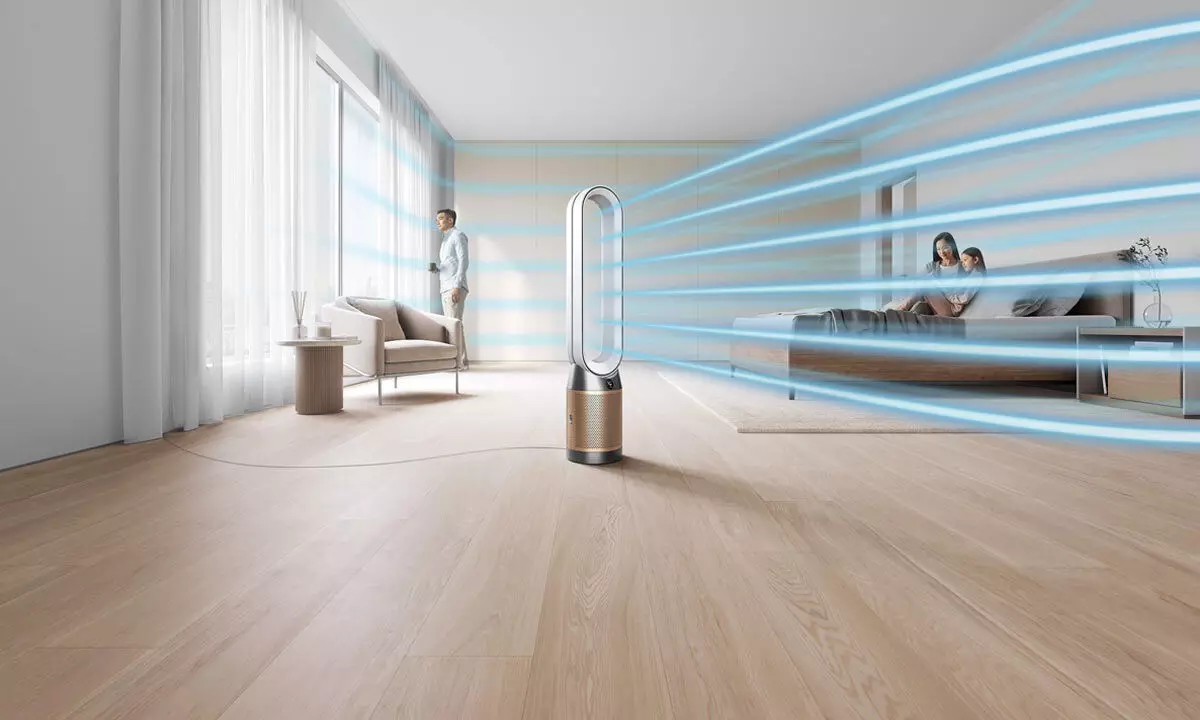Monsoon allergies: Are Air Purifiers helpful?

Monsoon allergies: Are Air Purifiers helpful?
During monsoons, the humidity levels go up, and you are surrounded by damp surfaces and exposed to a higher level of indoor pollutants, which can also trigger respiratory allergies.
We all know that air purifiers are known to improve air quality, but do air purifiers help with allergies? Most people think that the rainy season cleans up the air, but another lesser-known fact is that it also brings along triggers for allergies. Thereby, Muzaffar Izamuddin, Design Manager, Environmental Care at Dyson, educates consumers about high levels of indoor allergens and how certain air purifiers are designed to clean the air in a room by trapping allergens and pushing filtered, clean air back into the space.
What happens to indoor air quality during the monsoon season?
Increased particulate matter, increased allergens: During monsoons, the humidity levels go up and you are surrounded by damp surfaces and exposed to a higher level of indoor pollutants, which can also trigger respiratory allergies. These allergies are common and are known to cause irritation and discomfort. Moreover, the air inside our homes contains indoor air pollutants that are classified as particulate matter (PM), which refers to particles that are found in the air such as pollen fragments, dust mite fragments and dust mite faeces, as well as particles coming from outdoor pollution, like brake dust and vehicle exhaust particles. Many of these particles, 2.5 microns in size or larger, can be allergens and larger particles, like skin cells, contribute to dust levels in the home. Due to increased humidity, these common allergens grow more in the monsoon season.
Increase in airborne pollen levels: Allergy sufferers often believe that wet weather keeps pollen counts low. This is not always true. Light-to-moderate rainfall has been found to decrease pollen levels as it can directly wash out airborne pollen, but heavy rain can have the opposite effect. A comprehensive review of US meteorological and pollen count data found that less than 10cm of precipitation tended to reduce pollen levels. But more than 10cm had the reverse effect, tending to increase airborne pollen levels.
What could you be allergic to in your house?
If you feel itchy, watery eyes, sneezing, stuffy nose, and wheezing are just as bad if not worse, when you are indoors -- you might have some of these allergy triggers to blame, which include dust mites, pollen, pet dander, mold, cockroach droppings, dust mites etc. Some of the best ways to prevent allergy symptoms are:
Avoid spending significant amounts of time outside on high pollen days.
Keep windows and doors shut at home and in your car during high pollen days.
Shower – and have your family do the same – when they come in from outside in order to get rid of allergens they track in from outdoors.
Wash clothing after coming in from outdoors.
Wear a filter mask when doing yard work such as mowing the lawn or raking leaves.
Protect your eyes and nose with masks or glasses while outdoors.
Vacuum your home regularly with a closed system vacuum cleaner.
Launder linens often and freeze stuffed animals that cannot be washed in warm water.
Deep clean carpets and wash floors to reduce dander, dust mites, and other triggers.
Clean the air in your home using an air purifier with HEPA and carbon filters
Wash greenery such as plants before you bring them in from outside so they are free of mold and insects.
Whether cleaning the air or cleaning the carpets, machines with fully sealed filtration systems are crucial to managing allergen capture. Some air purifiers combine HEPA-13 filters with a sealed filtration system – so the whole machine now achieves HEPA H13 grade. This ensures that 99.95% of particles as small as 0.1 microns, including visible dust particles to hair, pollen, allergens and bacteria, are trapped inside the machine
The second layer of activated carbon captures gases like volatile organic compounds and nitrogen dioxide emitted from cleaning products, cooking or from outdoors. Precision 360-degree rubber seals around the filters to ensure proper sealing within the machine, removing the possibility of air bypassing the filter and leaking pollen or other allergens back into the room.
Next Story


















